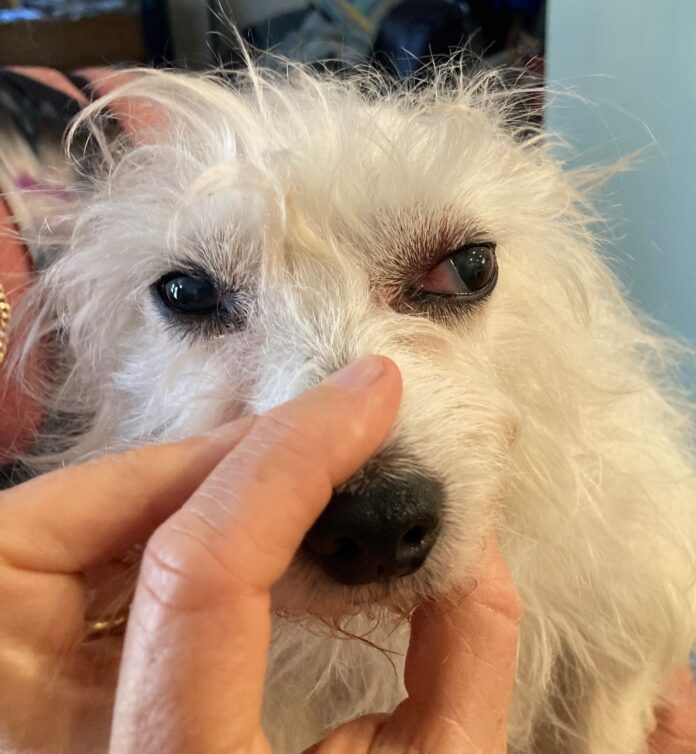
There are a number of reasons for a dog’s eye or eyes to begin bulging unnaturally. If you notice your dog has one or both eyes bulging, or has an oddly colored eye or a strange discharge from the eye—get your dog to your veterinarian as soon as possible. Time is of the essence for saving your dog’s vision. The bulging may be due to a swollen eyeball, which happens with glaucoma; swelling around the eyeball, which happens with infection and allergic reactions; or swelling behind the eyeball, which happens with infections, bleeding, or tumors. Glaucoma is painful, so your dog may act depressed and not want to eat. The eye will be red and look enlarged, the cornea may turn a bluish cloudy color, and there may be vision loss. Glaucoma is a veterinary emergency.
Flat-faced dogs with bulging eyes
Bulging eyes are most common in brachycephalic breeds of dogs—they’re the ones with the cute, smooshed-in faces like the Pug and Boston Terrier. These dogs naturally have shallow orbits, which are the bony sockets in the skull that house the eyeballs. Unfortunately, these dogs are at a higher risk of corneal injury. They are also prone to a terrible situation called proptosis in which the dog’s eyes pop out.
With proptosis, the eyeball pops out of the socket and the eyelids collapse behind it, essentially holding the eye out. This is a disaster that can happen in any dog due to trauma (usually a dog fight or vehicular incident), but it occurs most commonly in brachycephalic breeds due to their shallow sockets. Veterinary personnel are trained to avoid overzealously restraining a brachycephalic dog, as a person could literally pop the dog’s eyeballs out. Although proptosed eyeballs can sometimes be replaced, there is typically permanent damage to the optic nerve, which causes blindness. In most cases, the eyeball is surgically removed.
Bulging eyes in other dogs
Dogs of any breed can experience retrobulbar disease, which can take up enough space behind the eye to push the eyeball forward. This can be painful for the dog when he opens his mouth wide, such as when yawning. If you gently push on the eyeballs with the lids closed, you may notice you can push the normal eye in a bit, but the affected eye doesn’t budge. The most common causes of retrobulbar disease include tumors, abscesses, cysts, and hematomas. Treatment for periorbital disease depends on diagnosis, which usually requires advanced imaging like a CT scan.
An unusual cause of bulging eyes in dogs is extraocular myositis, which is an immune attack on the muscles that hold the eyeball in place. It occurs most frequently in young Golden Retrievers. The dog may appear to have a wide-eyed, surprised look all the time. Immediate veterinary care is needed to avoid permanent damage.





